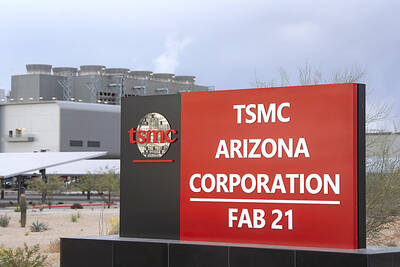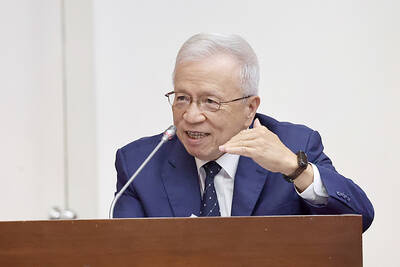The US dollar had its biggest weekly rise in 11 against both the euro and the yen on speculation accelerating US inflation will force the Federal Reserve to raise its interest-rate target more than anticipated.
Demand for the US currency increased this week as the Fed boosted borrowing costs by a quarter percentage point for a seventh time since June. The yield on 10-year US Treasury notes rose to the highest since June, adding to the attractiveness of the dollar.
"The dollar is gathering momentum," said Takako Masai, head of foreign exchange and derivative sales in Tokyo at Calyon, the investment banking unit of Credit Agricole SA. "The theme of this market is a widening US rate advantage. People are pushing up expectations on the Fed's action this year."
The US dollar was at ?106.4 at 5pm in New York, from ?106.31 late on Thursday, according to electronic currency dealing system EBS. It was also at US$1.2960 per euro from US$1.2940. The dollar gained 2.8 percent against the euro and 1.6 percent versus the yen on the week, and may gain to ?108 and US$1.25 per euro in the next three weeks, Masai said.
Financial centers including Hong Kong, Singapore, London, Frankfurt and New York were on holiday on Friday.
Traders are increasing bets on the extent to which US rates will rise. Eurodollar futures contracts show traders and investors expect the Fed to raise its benchmark rate to at least 4 percent by the end of this year, from 2.75 percent, after the central bank on March 23 noted "pressures on inflation have picked up."
The December Eurodollar futures contract yields 4.315 percent, up from 3.905 percent a month ago. It settles at a three-month lending rate that has averaged about 0.21 percentage point higher than the Fed's target rate in the past 10 years.
Gains in the dollar may be limited by speculation the rally will prompt some investors to bet the advance is excessive.
A technical indicator suggested the dollar is poised to fall. Its 10-day relative strength index against the euro fell to 26.26, and against the yen was at 73.5. The index is a gauge of momentum in a given period, and a level above 70 or below 30 suggests a change in direction.
"The long weekend in Europe and the US will keep the market quiet, making it more likely the dollar will take a break from its rally," said Tetsu Aikawa, a currency sales manager in Tokyo at UFJ Bank Ltd. "The run-up has been fast enough to trigger concerns of a pause."
Citigroup Inc, the biggest financial services company, advised selling the dollar against the euro as it contested the view that the Fed is more likely to raise interest rates in larger increments this year.
"We disagree with this interpretation of the Fed's statement and disagree with the view that a 50 basis point tightening is more likely," Steven Saywell, chief currency strategist in London at Citigroup, wrote on Thursday in a report. The bank expects the dollar to drop to US$1.3670 per euro.
The Fed's benchmark rate exceeds the European Central Bank's key rate by three quarters of a point, the biggest gap since March 2001. The next US policy-setting meeting is May 3.
The US next week is forecast to say the economy added more than 200,000 non-farm jobs for a second month in March, according to a Bloomberg survey of economists.
US consumer prices rose 0.4 percent last month, the most in four months and more than the 0.3 percent median forecast in a Bloomberg survey of economists, the government said on March 23. A US Labor Department report the day before showed wholesale prices rose for a second month last month.
"The dollar's upward trend is going to continue," said Toru Umemoto, market analyst in Tokyo at Keio University's Global Security Research Center. "Yields are rising, and the US economy is strengthening. All of this is dollar supportive."

JITTERS: Nexperia has a 20 percent market share for chips powering simpler features such as window controls, and changing supply chains could take years European carmakers are looking into ways to scratch components made with parts from China, spooked by deepening geopolitical spats playing out through chipmaker Nexperia BV and Beijing’s export controls on rare earths. To protect operations from trade ructions, several automakers are pushing major suppliers to find permanent alternatives to Chinese semiconductors, people familiar with the matter said. The industry is considering broader changes to its supply chain to adapt to shifting geopolitics, Europe’s main suppliers lobby CLEPA head Matthias Zink said. “We had some indications already — questions like: ‘How can you supply me without this dependency on China?’” Zink, who also

At least US$50 million for the freedom of an Emirati sheikh: That is the king’s ransom paid two weeks ago to militants linked to al-Qaeda who are pushing to topple the Malian government and impose Islamic law. Alongside a crippling fuel blockade, the Group for the Support of Islam and Muslims (JNIM) has made kidnapping wealthy foreigners for a ransom a pillar of its strategy of “economic jihad.” Its goal: Oust the junta, which has struggled to contain Mali’s decade-long insurgency since taking power following back-to-back coups in 2020 and 2021, by scaring away investors and paralyzing the west African country’s economy.

Taiwan Semiconductor Manufacturing Co (TSMC, 台積電) received about NT$147 billion (US$4.71 billion) in subsidies from the US, Japanese, German and Chinese governments over the past two years for its global expansion. Financial data compiled by the world’s largest contract chipmaker showed the company secured NT$4.77 billion in subsidies from the governments in the third quarter, bringing the total for the first three quarters of the year to about NT$71.9 billion. Along with the NT$75.16 billion in financial aid TSMC received last year, the chipmaker obtained NT$147 billion in subsidies in almost two years, the data showed. The subsidies received by its subsidiaries —

BUST FEARS: While a KMT legislator asked if an AI bubble could affect Taiwan, the DGBAS minister said the sector appears on track to continue growing The local property market has cooled down moderately following a series of credit control measures designed to contain speculation, the central bank said yesterday, while remaining tight-lipped about potential rule relaxations. Lawmakers in a meeting of the legislature’s Finance Committee voiced concerns to central bank officials that the credit control measures have adversely affected the government’s tax income and small and medium-sized property developers, with limited positive effects. Housing prices have been climbing since 2016, even when the central bank imposed its first set of control measures in 2020, Chinese Nationalist Party (KMT) Legislator Lo Ting-wei (羅廷瑋) said. “Since the second half of